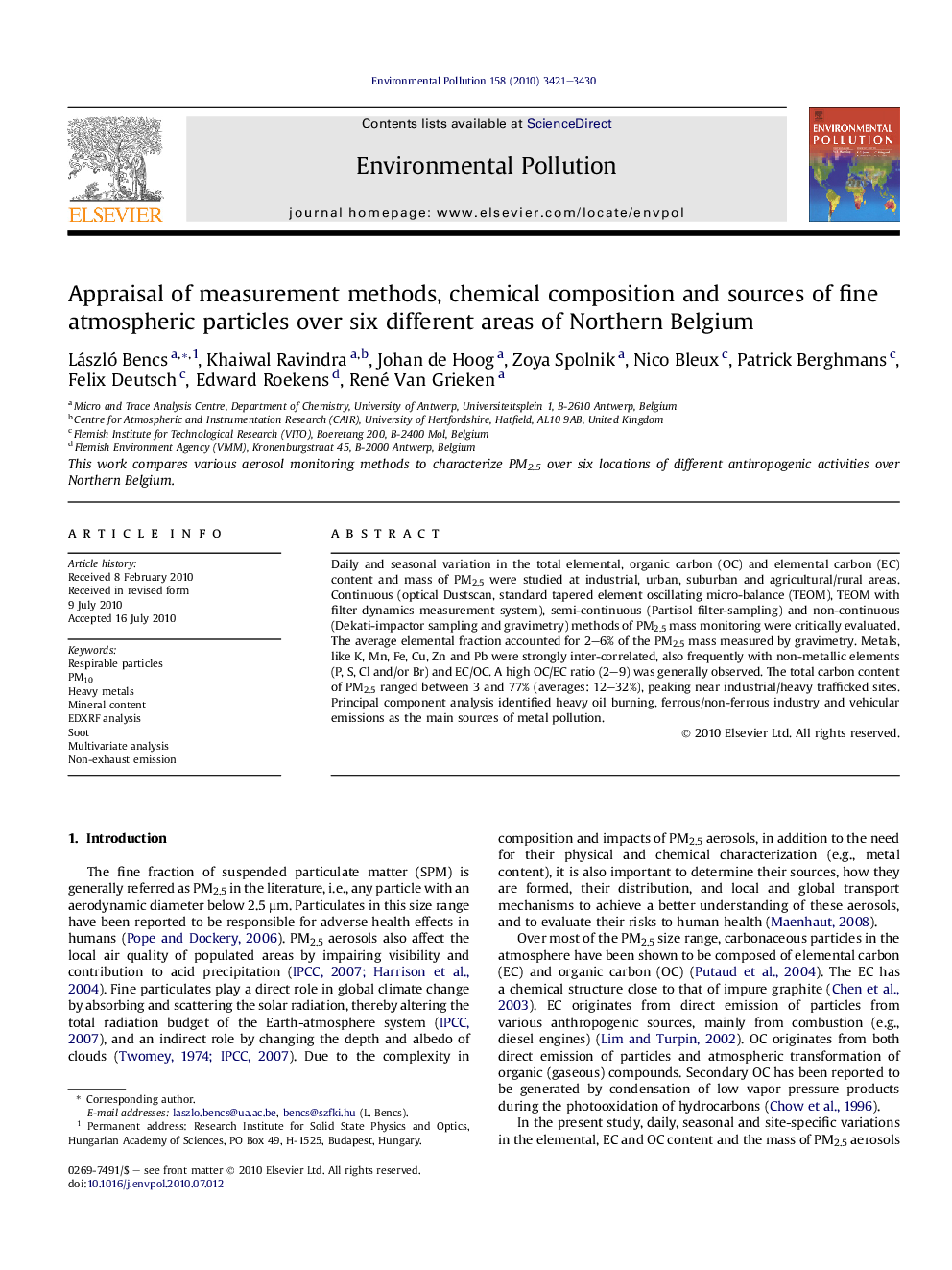| Article ID | Journal | Published Year | Pages | File Type |
|---|---|---|---|---|
| 4425670 | Environmental Pollution | 2010 | 10 Pages |
Daily and seasonal variation in the total elemental, organic carbon (OC) and elemental carbon (EC) content and mass of PM2.5 were studied at industrial, urban, suburban and agricultural/rural areas. Continuous (optical Dustscan, standard tapered element oscillating micro-balance (TEOM), TEOM with filter dynamics measurement system), semi-continuous (Partisol filter-sampling) and non-continuous (Dekati-impactor sampling and gravimetry) methods of PM2.5 mass monitoring were critically evaluated. The average elemental fraction accounted for 2–6% of the PM2.5 mass measured by gravimetry. Metals, like K, Mn, Fe, Cu, Zn and Pb were strongly inter-correlated, also frequently with non-metallic elements (P, S, Cl and/or Br) and EC/OC. A high OC/EC ratio (2–9) was generally observed. The total carbon content of PM2.5 ranged between 3 and 77% (averages: 12–32%), peaking near industrial/heavy trafficked sites. Principal component analysis identified heavy oil burning, ferrous/non-ferrous industry and vehicular emissions as the main sources of metal pollution.
